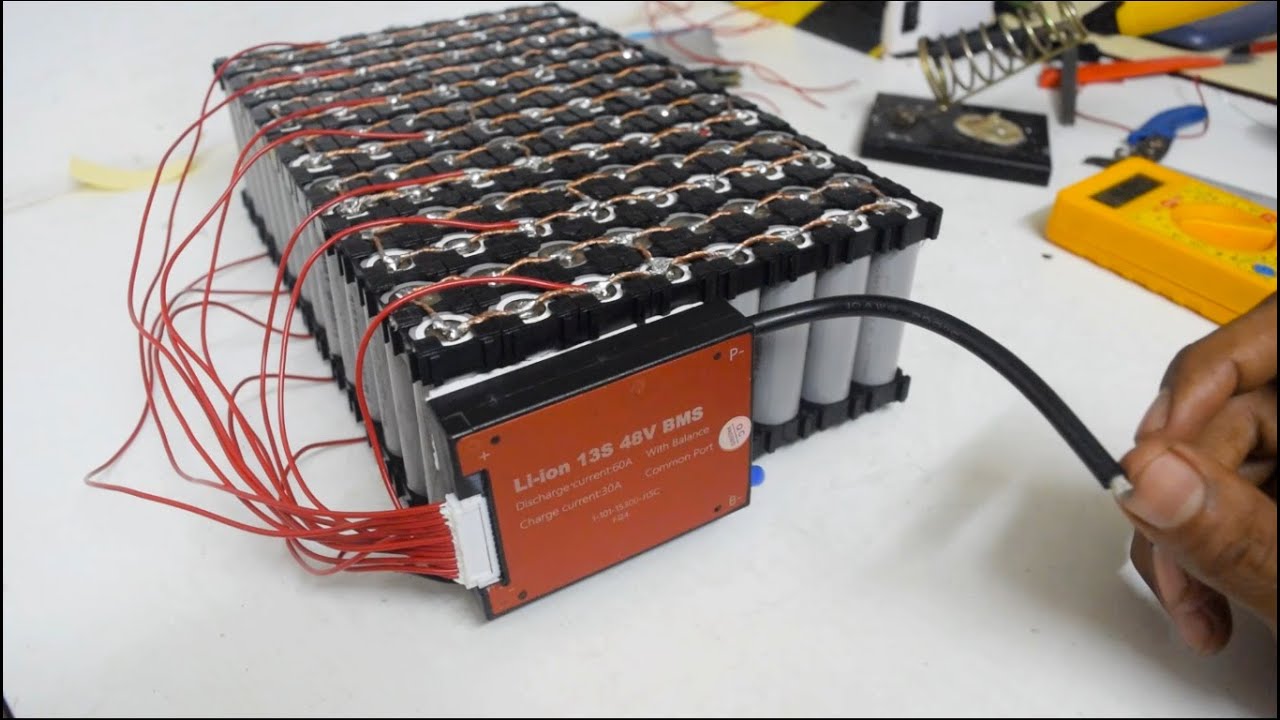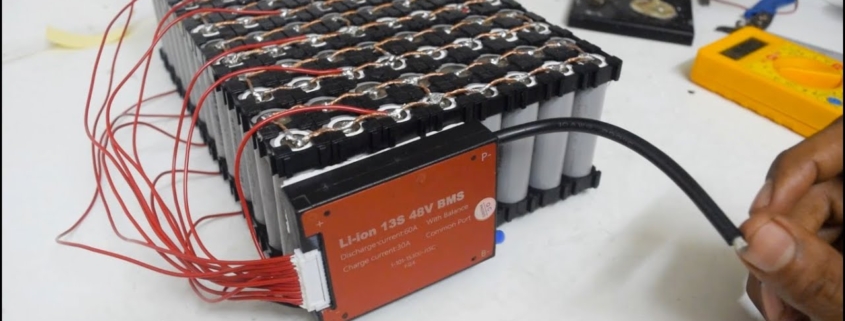How to Choose BMS for Battery Pack: Complete Guide
Choosing the right Battery Management System (BMS) for your battery pack is like picking the brain for your entire power system. Get it wrong, and you’re looking at damaged cells, safety risks, or a battery pack that dies way before its time.
I’ve seen too many DIY battery builders skip the research and grab any BMS that “looks right” – only to end up with fried cells or a system that shuts down at the worst possible moment.
Here’s the thing:
A properly matched BMS can extend your battery life from a few years to over a decade. It’s that important.
In this guide, as a professional lithium battery pack manufacturer, I’ll walk you through exactly how to choose BMS for battery pack projects, whether you’re building a solar power wall, an e-bike battery, or anything in between.

Why Your BMS Choice Matters More Than You Think
Think of your BMS as a bodyguard for your battery cells. It’s constantly monitoring voltage, current, and temperature – ready to step in when things go sideways.
Without the right BMS, here’s what can happen:
- Overcharge damage: Cells swell, leak, or worse – catch fire
- Deep discharge: Permanent capacity loss that can’t be recovered
- Thermal runaway: The nightmare scenario where your battery becomes a fire hazard
- Cell imbalance: Some cells work overtime while others slack off, killing your pack early
The crazy part? Most of these failures are 100% preventable with the right BMS.
How to Choose BMS for Battery Pack
Step 1: Match Your Battery Chemistry
This is where most people mess up right out of the gate.
Your BMS must be designed for your specific battery chemistry. Why? Because different chemistries have different voltage ranges and safety thresholds.
Here’s what you need to know:
LiFePO4 (LFP) Batteries
- Nominal voltage: 3.2V per cell
- Max charge voltage: 3.65V
- Cutoff voltage: 2.5V
- More stable but needs different voltage settings
Standard Li-ion (NMC/NCA)
- Nominal voltage: 3.7V per cell
- Max charge voltage: 4.2V
- Cutoff voltage: 2.5-3.0V
- Higher energy density but more sensitive
Pro tip: Using an NMC BMS on LFP cells (or vice versa) is like putting diesel in a gas engine. It might run briefly, but you’re heading for trouble.
Step 2: Count Your Series Cells (The “S” Number)
Your BMS needs to match the exact number of cells you have in series. This determines your pack’s total voltage.
Here’s the math:
- Total Pack Voltage = Number of Series Cells × Nominal Cell Voltage
For example:
- 4S LiFePO4 = 4 × 3.2V = 12.8V nominal
- 13S Li-ion = 13 × 3.7V = 48.1V nominal
The BMS model usually includes this number (like “13S BMS” or “4S BMS”). Get this wrong, and your BMS literally won’t connect properly.
Step 3: Calculate Your Current Requirements
This is where things get interesting – and where expensive mistakes happen.
Your BMS current rating needs to handle your maximum power draw, plus some headroom. But here’s the catch: you need to calculate based on your pack’s lowest voltage, not nominal.
Let me show you why:
Say you’re running a 1000W inverter on a 24V battery pack.
At full charge (29.2V for 7S Li-ion):
- Current = 1000W ÷ 29.2V = 34.2 amps
But when nearly dead (18.5V):
- Current = 1000W ÷ 18.5V = 54 amps
See the problem? If you sized for nominal voltage, you’d be 20 amps short.
My rule: Add 20-30% safety margin on top of your worst-case current. For this example, I’d go with at least a 70A BMS.
Step 4: Check the Essential Protection Features
Not all BMS units are created equal. The cheap ones cut corners on protection features that could save your battery (and possibly your home).
Here’s your non-negotiable checklist:
Critical Features
- Over-voltage protection: Stops charging before cells get damaged
- Under-voltage protection: Prevents deep discharge damage
- Over-current protection: Your last line of defense against shorts
- Temperature monitoring: Cuts off if things get too hot (or too cold for charging)
- Cell balancing: Keeps all cells at the same level
Nice-to-Have Features
- Bluetooth connectivity: Monitor your pack from your phone
- Programmable settings: Customize voltage thresholds
- Pre-charge circuit: Protects against capacitor inrush
- CAN bus/UART: For integration with inverters or displays
Step 5: Decide on BMS Architecture
You’ve got three main options here:
Centralized BMS
All the monitoring happens in one main unit. It’s simple, affordable, and perfect for smaller packs (under 14S).
Best for: E-bikes, power tools, small solar batteries
Distributed BMS
Monitoring circuits spread across the pack, talking to a central controller. More complex but better for large systems.
Best for: EV batteries, large power walls, commercial applications
Modular BMS
My personal favorite for DIY builders. You can swap modules, upgrade easily, and troubleshoot problems without replacing the whole system.
Best for: Experimental builds, systems that might expand later
Real-World Examples (With Numbers)
Let’s put this all together with some actual builds:
Example 1: 12V RV Battery
- Chemistry: LiFePO4
- Configuration: 4S10P (4 series, 10 parallel)
- Capacity: 200Ah
- Max load: 2000W inverter
BMS Choice: 4S 200A LiFePO4 BMS with Bluetooth
- Why 200A? Max current at low voltage = 2000W ÷ 12V = 167A (plus safety margin)
Example 2: 48V E-bike Battery
- Chemistry: Li-ion (NMC)
- Configuration: 13S4P
- Max motor draw: 1500W
BMS Choice: 13S 40A Li-ion BMS with balance current ≥50mA
- Current calculation: 1500W ÷ 46V (low voltage) = 33A (40A gives headroom)
Example 3: Home Solar Battery
- Chemistry: LiFePO4
- Configuration: 16S (51.2V)
- Inverter: 5000W
BMS Choice: 16S 120A LiFePO4 BMS with CAN communication
- Sized for: 5000W ÷ 44V = 114A (120A provides margin)
Common Mistakes to Avoid
I see these errors constantly in DIY battery groups:
Mistake #1: Buying a BMS before finalizing your pack design
Your BMS needs to match your exact configuration. Design first, buy second.
Mistake #2: Ignoring balance current
Cheap BMS units have pathetic balance currents (like 20mA). Look for at least 50mA for reliability.
Mistake #3: Forgetting about charge current
Your BMS needs to handle your charger’s max output too, not just discharge.
Mistake #4: Skipping temperature sensors
Especially critical for cold climates where lithium batteries can’t charge below freezing.
Quality Matters (Here’s Why)
I learned this the hard way:
A buddy saved $30 on a generic BMS for his e-bike battery. Six months later, it failed to cut off during overcharge. The result? A garage fire that cost him thousands.
Stick with proven brands like:
- JBD/Xiaoxiang: Great for most DIY projects
- Daly: Budget-friendly but reliable
- ANT: High-end features for serious builds
- Batrium: Top-tier for large installations
Installation Tips That’ll Save You Headaches
Once you’ve chosen your BMS, installation is critical:
- Double-check your wiring diagram – Most BMS failures are actually wiring mistakes
- Use proper gauge balance wires – Thin wires = voltage measurement errors
- Mount away from heat sources – Heat kills electronics
- Test before connecting loads – Verify all protection features work
- Document everything – Future you will thank present you
Advanced Features Worth Considering
For more sophisticated builds, these features can make a huge difference:
Smart Communication
CAN bus or RS485 lets your BMS talk to inverters and chargers. This enables:
- Dynamic current limiting based on temperature
- State of charge (SOC) reporting
- Automatic charging profiles
Precharge Circuits
Protects against the massive inrush current when connecting to inverters. If you’re running anything over 2000W, this feature pays for itself.
Active Balancing
Instead of burning excess energy as heat, active balancing moves it to lower cells. More efficient but costs more.
Le bilan
Choosing the right BMS isn’t rocket science, but it does require attention to detail. Match your chemistry, size for your current (with margin), and don’t cheap out on safety features.
Remember: Your BMS is protecting hundreds or thousands of dollars worth of cells. The $50 difference between a sketchy BMS and a quality one is the best insurance you can buy.
Follow these guidelines on how to choose BMS for battery pack projects, and you’ll build a system that’s safe, reliable, and lasts for years.
The key is taking the time to calculate your needs properly and investing in quality where it counts. Your future self (and your battery cells) will thank you.








